1
Section One: The Fundamentals
A) What do we know about sport? What are common assumptions we make about sport and society?

| Some people might not view sports as something that transcends politics because of how intertwined politics seems to be with sports these days. Even speaking about encouraging teamwork and unity. We have seen plently of examples in the news where trans athletes have been demonized by their peers, media and so on. There is no unity with that, only keeping people seperate. |
Exercise 3: Notebook prompt
What are some other metanarratives about sport that you are familiar with? Find an image or video clip or draw something yourself that captures this idea…
So what? Why does any of this matter? Does it matter? As something we grow up with – live with – play through – we don’t often interrogate the meanings of sport, and perhaps we don’t want to.
But being aware of these assumptions and metanarratives is especially important, I would argue, because of the centrality of sport to our everyday lives, the role that sport plays in shaping our childhood and worldviews and….. [finish that thought]
| How we view the world. Sport can teach use lessons of teamwork, coming together as a community and also being accepting of others. But sport can also show us unrealistic expectations of stereotypes. Having awareness of these assumptions and netanarratives can help us understand how these things shape our beliefs, especially when it comes to understanding different sports and their participants.
|
B) What is social justice?
Exercise 4: Padlet Prompt
Think back to the last section and try to look at some of the ideas we discussed differently. How might sport and social justice actually co-exist?
Record any images, video clips, or gifs you added to the padlet and identify a point of intersection between sport and social justice (can be an issue or a barrier or a debate or something you would like to explore in more depth in this course) . Screenshot or paste in your response below.
:max_bytes(150000):strip_icc():focal(979x553:981x555)/germany-gymnastics-1-2000-335af3be7d3d4bbaa2c43c913c61d19c.jpg)
We have seen many times that female atheletes have been forced into wearing uncomfortable uniforms and tight fitting outfits during their competitions. This is due to many factors, including and apparent need for judges to be able to see ‘what the athlete is doing’ better as well as some believing that the uniforms are more ‘functional’. As reported in an article posted by Sports Illustrated in 2021, The German women’s gymnastics team wore unitards as a way to combat the sexualization of female athletes in gymnastics.
|
C) Social Justice Reading
(note: this activity is optional!)
D) KINESIOLOGY AND SOCIAL JUSTICE
Exercise 5:
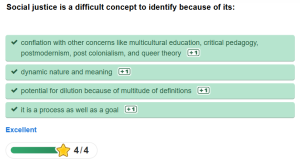
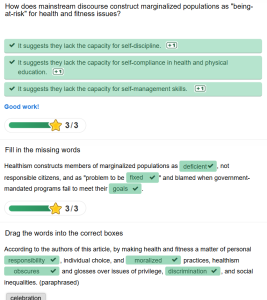
Exercise 6:
What are the implications of bodies-at-risk discourse and the refusal to understand the health gap from a social justice perspective, according to the authors of this article?
| The authors of this article argue that the bodies at risk discourse frames marginalized groups as deficient or vulnerable. These groups are blamed for their failure to comply with societal health norms, making them the supposed “problem”. This perspective does not accurately address the health disparities that marginalized groups go through in the healthcare system.
|
Section Two: Sport Feminism
Exercise 7: Notebook Prompt
What is feminism? What does it mean to you? Choose one of the images below and explain how it captures your understanding of feminism (or find one that does speak to you and paste this into your pressbook with an explanation of why it matters to you.
This picture represents my understanding of what feminism is. I understand this concept to mean equality for all. Everyone deserves to be validated, not one person should be above one another in this world. We all have our struggles, we should work together to address them.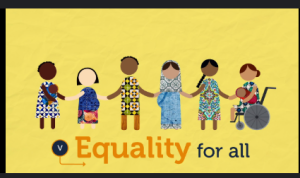 |
Exercise 8: Notes Prompt (optional)
NB: Cornell notes is a great resource that teaches effective notetaking. Unfortunately, our system can’t save notes taken in the H5P app, so this is fully optional.
Exercise 9: Crossword Activity
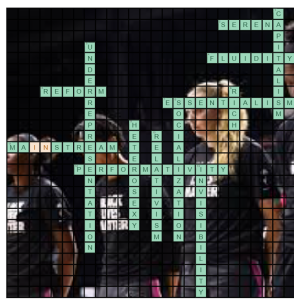
Exercise 10: Padlet Prompt
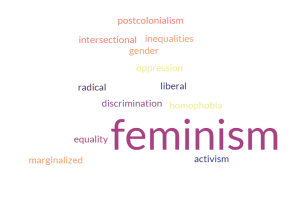
|
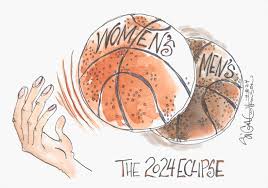
| Honestly? I feel like people only care about women’s sports because of the well known players in the league. Caitlin, Angel, Sue, Brittney are some examples of wnba players that have received much recognition in the media. But a few years ago? People used to critic the WNBA, talking about how it wasn’t as popular compared to their male counter parts, how the views were low in comparison and so on.
|

